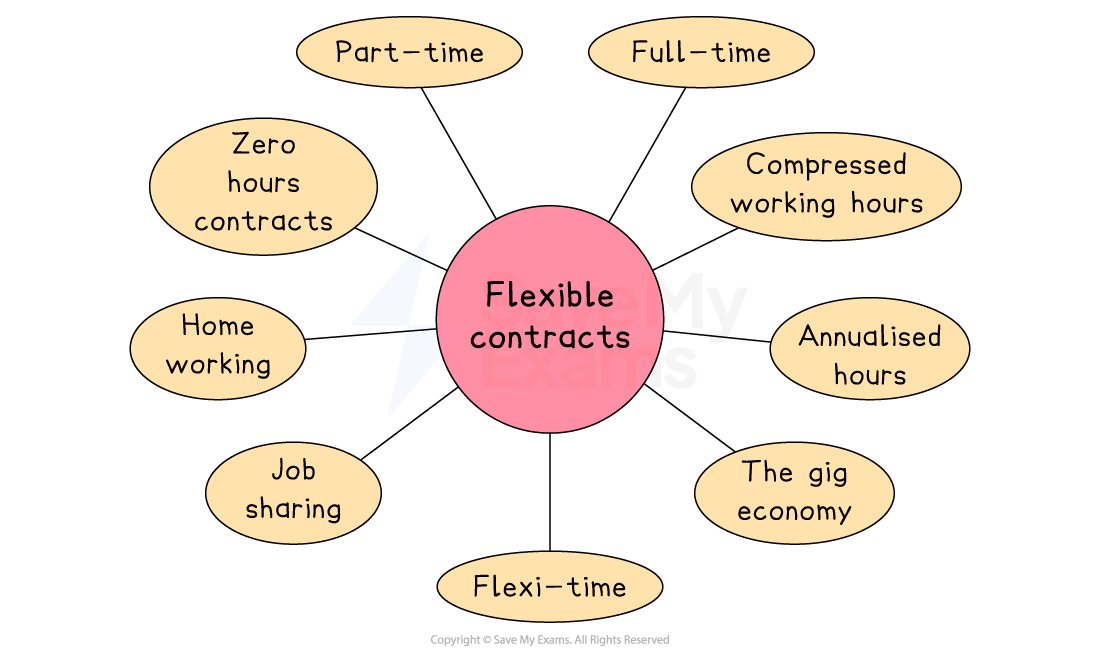Approaches to Human Resource Management (HRM) (Cambridge (CIE) A Level Business): Revision Note
Exam code: 9609
The difference between ‘hard’ and ‘soft’ HRM
Businesses use different approaches to meet their HR objectives. These are typically grouped into soft and hard human resource management (HRM) strategies:
Soft HRM
Focuses on employees as valuable long-term assets
Emphasises motivation, engagement, and development
Often linked to higher staff retention and job satisfaction
E.g. The John Lewis Partnership applies soft HRM by giving employees a stake in the company and a voice in key decisions
Hard HRM
Treats employees more like a resource to control and minimise costs
Focuses on efficiency, short-term contracts, and minimal employee involvement
Often linked to lower labour costs but higher labour turnover
E.g. Sports Direct has been criticised for using zero-hour contracts, a hallmark of hard HRM
Most businesses combine elements of both approaches depending on their strategy, budget, and industry
Flexible working contracts
Flexible working contracts include those that allow employees to choose when, where, or how they work to better suit their needs and lifestyle

Full-time contracts
A full-time employment contract requires the employee to work the number of hours per week set by the company
In the UK, full-time employees are classified as those who work 35 hours a week or more
At Save My Exams, a full-time employee works 40 hours each week
Advantages | Disadvantages |
|---|---|
|
|
Part-time contracts
Employees who work part-time may only work two or three days a week
Part-time employment may be more flexible and can be adjusted subject to employee availability and employer requirements
Part-time employees at the US company Costco work between 24 and 40 hours per week
Advantages | Disadvantages |
|---|---|
|
|
Annualised hours
An annualised hours contract sets the employee’s working time as a total number of hours to be completed over the whole year, rather than a fixed number each week
Wages are usually spread evenly, so employees receive the same salary each month even though weekly hours may rise or fall
Advantages | Disadvantages |
|---|---|
|
|
Compressed working hours
A compressed hours arrangement means an employee works their normal total hours for a period, but squeezes them into fewer, longer working days
E.g. Government offices in Australia allow staff to compress fortnightly hours into eight longer days, freeing every ninth and tenth day
Advantages | Disadvantages |
|---|---|
|
|
Shift working
This involves working different periods at different times, usually on a rota
It usually refers to anything outside of the standard Monday-Friday working week
Some warehouse employees might need to work an early shift to ensure deliveries are ready to go
In many care homes, night shifts are a regular part of the job
Advantages | Disadvantages |
|---|---|
|
|
Flexi-time
Flexi-time allow employees to schedule working hours around their individual needs and accommodate their commitments outside of work
It usually involves working some set hours, with the remainder of hours organised according to the employees' needs
E.g. An employee may be expected to be at work between the hours of 10am and 2pm, but can choose when they complete the rest of their working hours
Advantages | Disadvantages |
|---|---|
|
|
Home working
Advances in communication technology have enabled a larger proportion of workers than ever before to work from home
Employees use tools such as email, instant messaging, collaborative software, scheduling apps and videoconferencing to carry out work remotely
Advantages | Disadvantages |
|---|---|
|
|
Job sharing
Job sharing is where two or more employees divide a job between them to cover one full-time role
Pay, benefits and leave entitlement for job sharing are allocated on a proportional basis
Advantages | Disadvantages |
|---|---|
|
|
Zero hours contracts
This is where an employee agrees to be available for work as and when required, with no particular number of hours or times of work specified
In the UK, zero-hour contracts are controversial
Trade unions and the media have accused businesses, such as Sports Direct, of using them to exploit workers
In 2015, UK employers were banned from offering zero-hour contracts that prevented employees from working for another employer at the same time
Advantages | Disadvantages |
|---|---|
|
|
The gig economy
This is where people earn money by completing short, on-demand tasks instead of holding traditional, permanent jobs
E.g. In India and Southeast Asia the rapid expansion of ride-hailing and food-delivery apps such as Gojek and Swiggy has created many jobs in the gig economy
Advantages | Disadvantages |
|---|---|
|
|
Management by Objectives (MBO)
Management by objectives involves managers and employees jointly setting clear, measurable goals that link each job to the organisation’s overall aims
Performance is then judged on the results achieved
How MBO is implemented
Set organisational goals
Senior management define a set of strategic targets
Cascade and agree individual objectives
Each manager works with team members to translate these targets into personal SMART goals
Action plans, monitoring and feedback
Resources and deadlines are agreed, progress is tracked, and regular check-ins provide guidance
Appraisal and reward
At the review stage, achievement of the agreed objectives informs performance ratings, pay rises and further development plans
Usefulness of MBO to a business
Focus and alignment
Everyone understands exactly what is expected and how their work supports corporate goals, reducing wasted effort
Motivation and engagement
Because employees help set their own targets, they feel ownership, leading to higher commitment, better communication and stronger job satisfaction
Fair, data-based management
Clear, quantifiable objectives give managers unbiased criteria for appraisal, feedback and rewards, cutting disputes and making decisions more transparent
Broader benefits
Goal-setting encourages forward planning, highlights training needs, and can improve overall company performance by linking day-to-day tasks to long-term strategy

Unlock more, it's free!
Did this page help you?